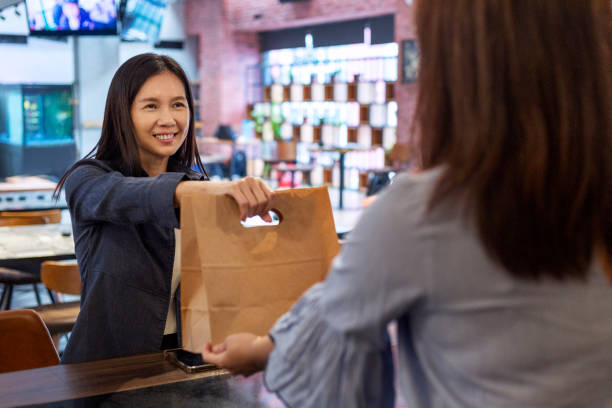Walk into a quick-service restaurant (QSR) in Singapore today, and you’ll notice something different. Customers aren’t standing in long queues at the counter. Instead, they head straight to sleek touchscreen kiosks, tap in their orders, pay, and pick up their food, all in a matter of minutes.
This isn’t just a shiny tech upgrade. It’s a complete change in how dining works. And it’s a change that’s catching the attention of restaurant operators far beyond Singapore. In fact, QSR owners in markets like the US are now looking closely at self ordering kiosk Singapore solutions as a blueprint for improving speed, efficiency, and customer satisfaction.
Let’s take a closer look at why kiosks are becoming a standard feature in Singapore’s QSR scene, how they work, and why they’re delivering results for both customers and business owners.
We thought you’d enjoy these articles as much as this one.
The Rise of Self-Ordering Kiosks in Singapore
Singapore is a city that embraces technology quickly. From cashless payments to app-based food delivery and even robot coffee baristas, the country has a reputation for blending innovation into everyday life. Self ordering kiosk Singapore adoption is a natural fit for this environment.
Big brands like McDonald’s, KFC, and Starbucks brought kiosks to Singapore years ago, but now smaller chains, independent cafés, and even hawker stalls are adopting them. The reasons are clear:
- Faster service: Orders go straight to the kitchen, avoiding counter bottlenecks.
- Better accuracy: Customers enter their own orders, reducing miscommunication.
- Higher sales: Kiosks suggest add-ons and upgrades automatically.
For QSRs in other countries, these benefits address some of the biggest challenges in the industry: long queues, order errors, and inconsistent sales.
How Self-Ordering Kiosks Work
The concept is simple, but the execution is where Singapore excels.
A self-ordering kiosk is essentially a touchscreen terminal linked to the restaurant’s Point of Sale (POS) system. The customer journey looks like this:
- Customers browse the menu on the kiosk.
- Select items, customize their orders, and see prices update instantly.
- Pay using cards, mobile wallets, or QR codes.
- Receive an order number and track it until pickup.
In Singapore, the difference is in the details, clear, well-designed menus, multiple language options, and fast payment integration. This smooth user experience keeps queues moving and customers happy.
How Self-Ordering Kiosks Improve the Customer Experience
1. Faster Order Processing
Peak hours test a QSR’s efficiency. Kiosks let several customers order simultaneously, bypassing the single-counter bottleneck. Orders go straight to the kitchen, cutting wait times and keeping service flow smooth.
2. More Control for Customers
Instead of feeling rushed at the counter, diners can take their time browsing the menu, reading ingredient lists, and customizing meals. This reduces mistakes and ensures the order matches exactly what the customer wants.
3. Multi-Language Support
Singapore’s mix of locals, expats, and tourists means language accessibility matters. Many kiosks offer English, Mandarin, Malay, and Tamil options, making the ordering process straightforward for everyone.
4. Contactless and Hygienic
With cashless payments and minimal staff interaction, kiosks align with post-pandemic hygiene priorities. Touchscreens are designed for easy cleaning, and payment options include cards, mobile wallets, and QR codes.
Benefits for Quick-Service Restaurant Owners
While kiosks clearly improve the customer experience, they also deliver significant operational advantages for QSR owners.
- Streamlined Operations: With the ordering process automated, staff can focus on preparing meals and maintaining quality instead of juggling queues.
- Lower Labour Costs: Singapore’s tight labour market means wages are high and finding staff can be challenging. Kiosks help reduce the need for extra counter staff.
- Increased Sales Through Upselling: Kiosks never forget to offer a combo deal or extra topping, and customers often say “yes” when the suggestion is presented visually and without pressure.
- Data-Driven Insights: Every order is logged, giving owners valuable insights: peak times, popular dishes, and even which add-ons sell best. This data shapes smarter menus and targeted promotions.
What to Look For in a Self-Ordering Kiosk Solution
If you’re a QSR owner in Singapore (or planning to roll out kiosks elsewhere), focus on features that directly improve customer experience and operations:
- A clean, intuitive interface: Menus should be easy to navigate, with clear visuals and responsive touchscreens. First-time users shouldn’t need help, and regular customers should be able to order quickly.
- Multiple payment integrations: Support for cards, mobile wallets, and local options like GrabPay, PayNow, and NETS ensures every customer can pay their preferred way.
- Seamless POS and kitchen integration: Orders should flow instantly to the kitchen display system, eliminating delays and miscommunication.
- Customisable branding: The kiosk should reflect your restaurant’s colours, logo, and layout, keeping the experience consistent with your brand.
- Strong after-sales support: Regular software updates, quick troubleshooting, and reliable maintenance reduce downtime and keep service smooth.
Common Concerns (And Why They’re Manageable)
Some owners worry that kiosks might feel impersonal, pushing away customers who prefer speaking to a cashier. The reality? You can run kiosks alongside staffed counters, giving customers the choice.
The other concern is cost. Yes, kiosks require an upfront investment, but many restaurants recover the expense in a matter of months through labour savings and higher average order values.
Where the Trend Is Headed
Singapore’s QSR sector is moving toward more automation, not less. As customers demand faster service and greater personalisation, kiosks will likely evolve to include:
- AI-powered menu recommendations based on order history.
- Facial recognition for loyalty members.
- Dynamic pricing that changes during peak or off-peak hours.
These developments won’t replace human service entirely, but they will make quick-service dining faster, smoother, and more profitable.
Final Thoughts
Self-ordering kiosk solutions in Singapore aren’t just a passing tech fad. They’re a proven way to improve service speed, reduce errors, and make dining more convenient for customers, while helping restaurant owners save costs and grow revenue.
For customers, kiosks mean control, convenience, and a faster dining experience. For owners, they mean efficiency, higher sales, and better insights.
If you’re in the QSR business and haven’t explored kiosks yet, now’s the time. The self ordering kiosk Singapore model, powered by solutions like Hashmato, shows that embracing this technology early gives you a competitive edge and keeps you ahead of customer expectations.
Don’t miss any updates—see all our posts at Management Works Media.






